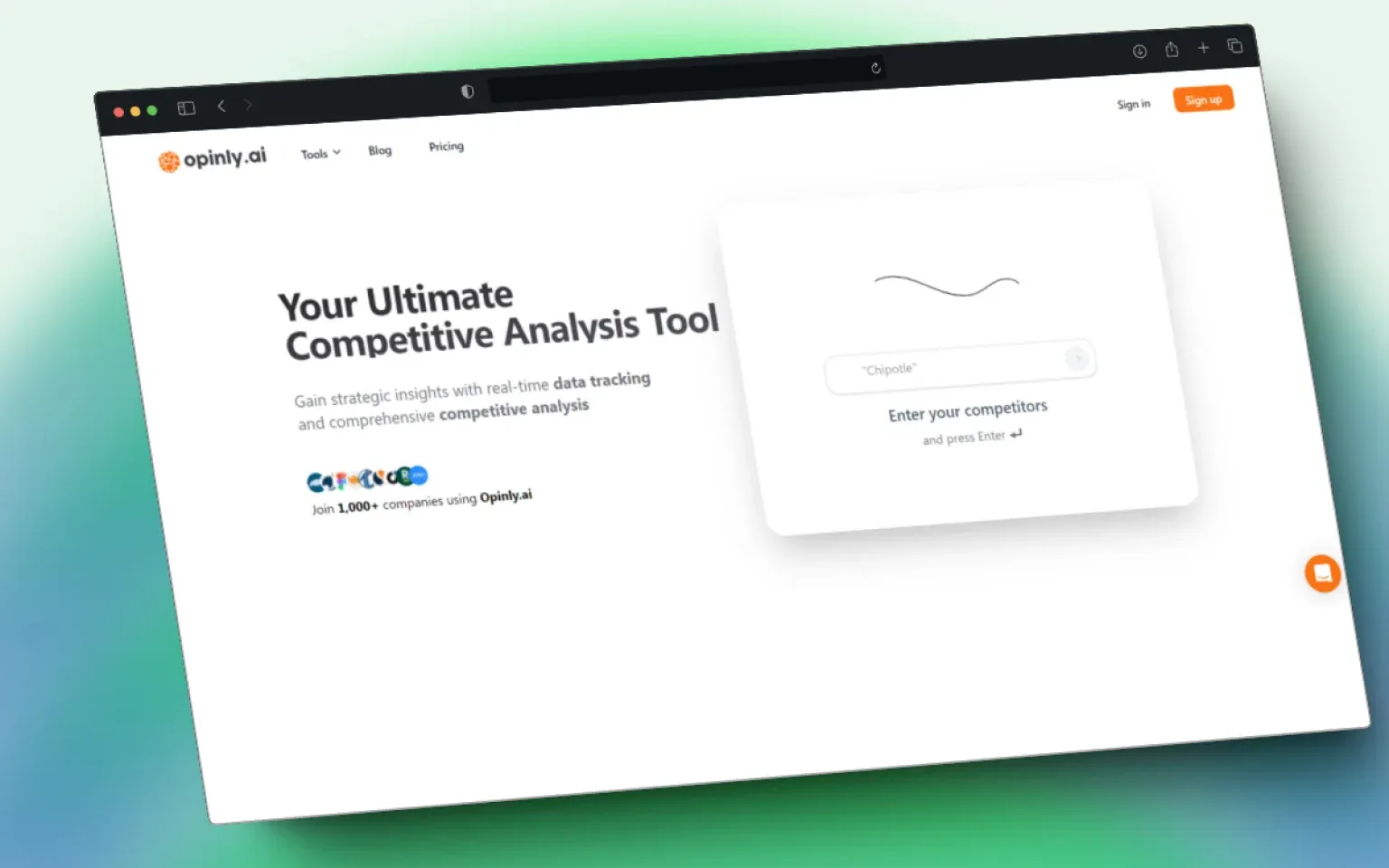An Introduction to Dynamic Pricing Retail
Learn how retailers use dynamic pricing retail strategies. Understand the impact of real-time pricing on product prices and competitor pricing models.

Over the past year, as people stayed home and ordered everything online from groceries to laptops, they were reminded how simple it is to compare prices on the internet.
Dynamic pricing in retail is changing the game by letting stores adjust prices based on demand instantly. This helps businesses sell products faster, keep customers happy with personalized prices, and boost profits while staying ahead in a competitive market. - David McGuckin, Software Engineer at Opinly AI
With just a few clicks, shoppers can see which store offers the lowest price for a product. As online shopping continues to grow, pricing will become a key way for retailers to compete. Dynamic pricing, especially, will be important in helping retailers stand out in the future.
What is Dynamic Pricing?

Dynamic pricing is when a store changes its prices throughout the day. The goal is to both maximize profits and increase sales.
Unlike fixed pricing, where prices stay the same for a season, dynamic pricing allows retailers to update prices several times a day based on market changes.
People often mix up dynamic pricing with personalized pricing, but they are quite different.
Dynamic pricing adjusts prices based on the overall market value of a product, while personalized pricing changes prices based on an individual shopper's past behavior and preferences.
What is Dynamic Pricing Retail?

Dynamic pricing in retail is a strategy where stores adjust their prices frequently, sometimes multiple times a day, based on various factors such as current market conditions, demand, and competition.
This approach allows retailers to be flexible and responsive to changes, ensuring they can maximize sales and profits.
For example, if a product becomes very popular and demand increases, a retailer might raise the price to make more profit. Conversely, if a product isn't selling well, they might lower the price to attract more customers.
Dynamic pricing also takes into account competitor prices; if a competitor lowers their price, a retailer might do the same to stay competitive.
This strategy is made possible by advanced technology and data analysis, which help retailers track market trends and consumer behavior in real time.
By continuously monitoring these factors, retailers can adjust their prices accordingly, offering the best possible price to consumers while optimizing their own profit margins.
Key Success Factors of Dynamic Pricing Retail Strategies

Retailers who have successfully used dynamic pricing usually follow these rules: focus on the final price customers pay, consider what customers expect, regularly test and improve their pricing strategy, and carefully plan their approach.
1. Focus on the total price, not just the item price.
Shoppers care about the final amount they pay, which includes taxes, shipping costs, service charges, and other fees. Your dynamic pricing strategy should emphasize this total cost, ensuring it matches your value proposition. This means carefully considering not only the item's price but also promotions, bundles, personalized offers, and shipping options.
For example, a furniture store experimented with lower delivery fees and longer delivery times. They found that customers preferred having their furniture delivered on a convenient day, like a Saturday, rather than immediately.
This flexibility allowed the company to optimize delivery schedules and reduce costs. By offering customers the option to wait for weekend delivery and sharing the savings with them, the store successfully increased sales.
2. Consider what customers expect.
Some items are more suitable for frequent price changes than others. For example, trendy fashion items can have prices that change weekly, but basic items like plain T-shirts or underwear should stay more consistent. Long-time customers shouldn't be shocked by sudden price hikes on items they regularly buy, like white crew socks.
Think about how often people buy certain products and their expectations. Prices for big-ticket items like TVs or sofas, which consumers research thoroughly, should stay stable. Frequent price changes on these items can frustrate customers who have spent months researching.
Dynamic pricing should always be guided by merchants, with most price changes approved by them before implementation. This helps avoid backlash from customers who might feel taken advantage of by sudden price increases.
For example, during the COVID-19 pandemic, retailers that raised prices on cleaning products were seen as exploiting the situation, leading to a loss of customer trust and loyalty.
3. Test and refine your dynamic pricing strategies.
Dynamic pricing involves both art and science, so a test-and-learn approach is essential. To manage risk, work with your CFO to set aside a budget for experiments and agree on the general direction of price changes during initial tests.
Start with small pilots in one product category or region. Expect some initial failures and have a plan for tracking progress, measuring impact, and making quick adjustments. Spend time with merchants during these early tests to develop the next steps before moving to automated price changes.
For instance, a high-end accessories retailer had pricing analysts collaborate with merchants to embed their pricing logic into algorithms. They then tested these strategies in the market, focusing on two key areas.
First, they identified how similar products at different prices affected customer choices. For example, most customers who considered a $350 item were willing to upgrade to a $399 item, but not if it was priced at $400.
Second, they examined customer responses to bundled offers. When the retailer bundled two items usually bought together for $499, customers focused on the bundle price and ignored individual item price changes.
This testing approach led to a new pricing strategy that increased profits in the test categories by over 50% and resulted in an automated pricing system for 500,000 products.
4. Plan your journey with dynamic pricing optimization.
As a first step, understand where your brand stands in the market and how consumers perceive your prices.
Analyze your current competitive position and compare your prices with competitors to see if you are considered a budget-friendly option, a premium brand, or somewhere in between. This insight is crucial for shaping your dynamic pricing strategy.
Next, plan your journey towards implementing dynamic pricing. Recognize that this is a complex process that won’t happen overnight.
Outline a clear roadmap that includes short-term, mid-term, and long-term goals to stay focused and organized as you progress.
Given that most retailers start from a point where significant development is needed, take a phased approach. Begin with data collection and analysis, investing in high-quality data on market trends, competitor pricing, and customer behavior. Use this data to build a foundation for your dynamic pricing strategy.
Develop or acquire the necessary technology and tools to support dynamic pricing. This might include pricing software, algorithms, and data analytics platforms.
Hire or train a team with the skills needed to manage and refine your dynamic pricing strategy, including data analysts, pricing experts, and IT professionals.
Communicate within your organization that this transformation will take time, setting and managing expectations to maintain support and motivation. To keep the organization engaged and supportive, aim for some quick, visible successes early in the process. These quick wins can demonstrate the potential of dynamic pricing and help build momentum for the larger, long-term changes.
5. Continuous Testing and Refinement
Regularly test and adjust your pricing strategy based on performance data to optimize results and stay competitive.
This means you should frequently experiment with different prices to see what works best. Track how these changes affect sales and profits. If a certain price increase leads to more sales, keep it. If it doesn’t work, try a different approach.
By constantly testing and refining your strategy, you can find the best prices to attract customers and boost profits. This ongoing process helps you stay ahead of competitors and adapt to market changes quickly.
Potential Challenges to Be Aware Of Dynamic Pricing Retail

When using dynamic pricing, retailers often make mistakes like setting prices that upset customers, changing prices too often, and using inaccurate data.
1. Avoid upsetting the customer.
Consumers expect airfares to change often, but they expect the price of everyday items like pasta sauce or shampoo to stay mostly the same. Make sure any price changes recommended by your algorithm match your brand and provide a good customer experience.
Set strict rules to prevent prices from fluctuating too much, as this can confuse and upset customers. If people think your prices are random, unfair, or inconsistent with your brand's value, they'll shop elsewhere.
Prices should also be consistent across different devices or shopping channels. For example, many retailers ask for a zip code before showing prices online to ensure customers see similar prices both online and in physical stores.
Customers have certain expectations about pricing levels (like good, better, and best options), often shaped by your past pricing strategies. Sudden changes that break these norms can confuse customers and cause them to leave.
2. Don't change prices without a good reason.
The reasons for changing prices can vary widely among retailers and different purchase occasions. In some cases, like seasonal changes or new competitor products, price adjustments make sense.
But if there are no changes in costs, availability, or competitor prices, there's no need to change prices. For example, a grocery store created a pricing strategy where prices for essential items like milk and eggs changed weekly based on costs and competitor prices.
Meanwhile, prices for other items like packaged foods stayed the same because their costs didn't change much.
Another important tip: always let customers know when you've lowered prices. A discount store reduced prices on key items but didn't advertise it, so customers didn't notice, and the effort was wasted.
3. Don't let inaccurate data determine your prices.
Today's technologies allow for precise pricing management and quick updates, but poor data can ruin even the best dynamic pricing strategy.
For example, costs like product prices, shipping fees, and customer service expenses are often averaged out across many items, but they actually impact each product differently.
If you underestimate shipping costs for large items or fast delivery, it can make the profit margins look better than they are. This might lead algorithms to suggest lowering prices, but doing so could result in significant losses.
Cleaning up and accurately detailing costs for high-value items can greatly improve pricing decisions.
4. Regulatory Compliance
When using dynamic pricing, you need to follow all relevant laws and industry standards. This means making sure your pricing practices are fair and transparent, and that they don’t exploit customers.
For example, some regions have laws against price gouging, which is when prices are raised excessively during emergencies or shortages.
If your dynamic pricing strategy leads to very high prices during such times, you could face legal consequences. Additionally, there are rules about how prices must be displayed to consumers, ensuring that they’re not misleading.
Failing to comply with these regulations can lead to fines and legal problems. It can also hurt your company’s reputation, as customers may feel that you are not trustworthy. To avoid these issues, always ensure your pricing strategies are within legal boundaries and align with industry best practices.
5. Algorithm Limitations
Automated pricing algorithms are powerful tools, but they can't account for everything. For instance, they might not consider the importance of maintaining long-term customer relationships or how price changes affect the overall perception of your brand.
If you rely only on algorithms without any human oversight, you might make mistakes. For example, an algorithm might suggest a price increase that boosts short-term profits but upsets loyal customers, leading them to shop elsewhere. Or, it might lower prices too much, making your brand seem cheap and hurting its reputation.
To avoid these issues, it's important to have people review and adjust the algorithm's recommendations. Combining human judgment with automated tools ensures that your pricing strategy is both effective and considerate of factors that algorithms might miss.
Dynamic Pricing Rules in E-commerce

Dynamic pricing and e-commerce have developed together. As the internet improved and online shopping became more popular, the need for dynamic pricing also grew.
Consumer electronics were among the first to move online. This makes sense because these products are very sensitive to price changes. Retailers need dynamic pricing to stay competitive and offer the best prices.
As more people buy electronics online, two important developments affecting dynamic pricing have emerged:
a. Increased Price Transparency
With more people shopping for electronics online, comparison shopping has become more common. Consumers now frequently compare prices between different retailers.
This means your product's price is more important than ever. Because electronics are very sensitive to price changes, even a 5%-10% difference between your price and a competitor's can make or break a sale.
b. More Frequent Price Changes
Due to the higher demand for price transparency and competitive pricing, the number of daily price changes has increased significantly since e-commerce began. In the past, suppliers or manufacturers would set a product's price with a suggested retail price (SRP). However, this SRP quickly became outdated with the rise of online price comparison.
Now, retailers set their own prices based on various factors, such as market trends, competitor prices, and stock levels.
Many other categories, like Toys and Games, follow a similar pattern: as more people buy these items online, the need for price transparency grows. This leads to more frequent price changes and the use of dynamic pricing.
This trend also attracts new online-only retailers, making it harder for traditional stores to compete.
Although traditional retailers had the early advantage, they are usually less flexible in changing their pricing strategies. However, those who effectively use their presence both online and in physical stores can get ahead of the competition.
Dynamic pricing software Importance

Most retailers use a basic form of dynamic pricing by offering discounts at the end of a season or having clearance sales to get rid of extra stock.
However, dynamic pricing can do much more than just seasonal discounts. With dynamic pricing software, you can use data to increase sales and manage your inventory better.
Today, almost all major retailers use some kind of dynamic pricing software.
What are some dynamic pricing retail strategies?
Traditionally, there are three basic ways retailers set their prices: the cost-plus method, the competitor-based method, and the value-based method.
- Cost-Plus Method: This is the simplest. You take the cost of your product and add a desired profit margin on top of that cost.
- Competitor-Based Method: This method involves adjusting your prices based on your competitors' prices. If they change their price, you change yours to be either lower or higher.
- Value-Based Method: This method looks at how much customers are willing to pay for a product. Different people value items differently, so this strategy charges based on perceived value.
Dynamic pricing software allows you to use a mix of these methods at the same time. Some software can also factor in other useful information, such as your stock levels, product popularity, and even the weather forecast.
How Dynamic Pricing Works
Implementing dynamic pricing is a journey with many twists and turns, bringing significant changes to your organization. It should be seen as an opportunity to enhance your overall pricing strategy, internal systems, and profit margins.
Is it difficult to start with dynamic pricing? After completing hundreds of implementation projects, we have developed a five-step process to successfully implement dynamic pricing:
Steps to Implement Dynamic Pricing Retail in Business Strategy

1. Define Your Commercial Objective
Think of your commercial objective as your company's compass. It guides all changes and ensures you stay on the right path. This objective goes beyond just pricing and marketing, but it’s the first step for a successful dynamic pricing strategy.
2. Build a Dynamic Pricing System
Your pricing strategy translates your commercial objective into a plan your team will use to sell products. For example, if your goal is to be the cheapest retailer on the market, your pricing strategy would be to ensure every product in your store is priced lower than the competition.
3. Choose Your Dynamic Pricing Methods
Your pricing strategy tells you what you want to achieve. Your methods are the specific actions you'll take to reach those pricing goals.
4. Establish Dynamic Pricing Solutions and Rules
Pricing rules guide your dynamic pricing software. Set a rule for each product that the software will track and adjust.
5. Test and Monitor Your Dynamic Pricing Model
The final step is to test and monitor the changes made by your dynamic pricing software to ensure effectiveness and accuracy.
How Opinly AI Helps in Dynamic Pricing Retail

Opinly AI helps retailers with dynamic pricing by using advanced technology to analyze market trends, competitor prices, and customer behavior. This allows retailers to adjust their prices in real-time, ensuring they remain competitive and maximize profits.
Opinly AI automates the pricing process, making it faster and more efficient while providing insights to help retailers make informed pricing decisions.
Conclusion
Dynamic pricing is important for staying competitive and boosting profits in today's retail world. Opinly AI helps retailers manage dynamic pricing by analyzing market trends, competitor prices, and customer behavior.
This allows for real-time price adjustments, making the process faster and more efficient. With Opinly AI, retailers can quickly adapt to market changes and customer needs, improving their pricing strategy and increasing their profits.
Frequently Asked Questions
1. What is dynamic pricing in retail?
Dynamic pricing in retail is when stores change their prices frequently based on factors like demand, competition, and market trends to maximize sales and profits.
2. What is dynamic pricing with an example?
Dynamic pricing is when prices change in response to market conditions. For example, an online store might lower the price of a TV if a competitor offers a discount, or increase prices for umbrellas during a sudden rainstorm.
3. What products use dynamic pricing?
Many products use dynamic pricing, especially electronics, airline tickets, hotel rooms, ride-sharing services, and seasonal items like clothing or sports equipment.
4. Is dynamic pricing in place when retailers charge the same price?
No, dynamic pricing involves changing prices regularly. If retailers charge the same price, they are not using dynamic pricing.
5. What are dynamic pricing advantages and disadvantages?
The advantage of dynamic pricing is that it helps maximize profits, stay competitive, and respond quickly to market changes. The disadvantages of dynamic pricing can confuse or upset customers if prices change too often, and requires accurate data and good technology to manage effectively.
